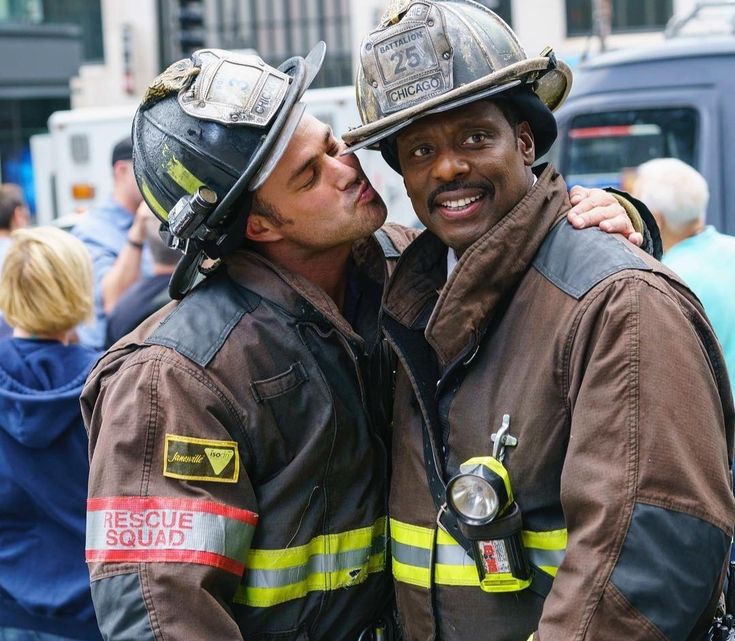Digging Deeper Into the Emotional Core of Firehouse 51
While Chicago Fire is well-known for its high-stakes rescues and fiery action sequences, it’s the deeply human stories at its center that keep audiences coming back. The show doesn’t just depict emergencies—it delves into the relationships and internal struggles that make the firefighters of Firehouse 51 feel like family. In doing so, Chicago Fire offers a unique blend of procedural drama and personal storytelling that sets it apart from its peers.
The Bonds That Define Firehouse 51
A Brotherhood Built in the Flames
At the heart of Chicago Fire is the unshakable bond between its main characters, particularly between Matthew Casey and Kelly Severide. Their relationship—often marked by tension, loyalty, and mutual respect—has become one of the show’s emotional anchors. Both men are natural leaders, but with differing styles: Casey is methodical and moral-driven, while Severide is instinctive and emotionally complex.
Their dynamic often mirrors real-life partnerships in high-stress professions. They clash, they disagree, but they always have each other’s backs when it matters most. This portrayal of brotherhood feels authentic and earned, rather than manufactured for drama.
Romance in a High-Risk World
Love is never easy—especially in a profession that constantly teeters on the edge of danger. Chicago Fire explores this reality with surprising depth. From Casey’s turbulent relationship with Gabby Dawson to the fan-favorite pairing of Severide and Stella Kidd, romance on this show is rarely smooth or idealized.
Stellaride, in particular, stands out. Their relationship has gone through heartbreak, miscommunication, personal growth, and eventual reconciliation—all while juggling the pressures of working side by side. The show treats their connection with nuance, allowing both characters to flourish individually and as a couple.
Facing Grief, Growth, and the Burden of Loss
Saying Goodbye: When Characters Leave

Unlike many procedural shows that maintain a static cast, Chicago Fire embraces change—and loss. When characters leave the firehouse, either by choice or tragedy, the impact is deeply felt, both on-screen and among viewers. The deaths of Leslie Shay and Otis remain some of the most heartbreaking moments in the series, handled with a level of emotional gravity that lingers long after the episodes end.
These storylines aren’t just shocking—they’re transformative. The firehouse doesn’t just move on; it carries the weight of absence. Memorials, flashbacks, and emotional tributes reinforce the message: in this line of work, loss is inevitable, and grieving is part of the job.
Mental Health and the Weight of Responsibility
Another strength of Chicago Fire is its honest approach to mental health. Characters don’t always bounce back from trauma—instead, they’re shown wrestling with guilt, fear, and exhaustion. This is particularly evident in storylines involving Severide’s grief or Kidd’s struggle with imposter syndrome as she rises into leadership.
In recent seasons, the show has subtly woven in topics like PTSD, therapy, and burnout, offering a more realistic portrayal of what it means to be on the front lines. These arcs are not just plot devices—they reflect a deeper truth about service professions often overlooked in pop culture.
Why the Series Still Resonates After More Than a Decade
Relatable Themes in an Extraordinary Setting
What makes Chicago Fire so enduring is its ability to make the extraordinary feel familiar. The emergencies are grand, the explosions loud, but the emotional beats are quiet and intimate. Whether it’s a rookie firefighter trying to prove themselves or a veteran confronting their own limitations, the show roots its stories in universal struggles—belonging, grief, love, and purpose.
This balance between spectacle and substance is rare. Viewers don’t just care about whether the victims are saved—they care about how the firefighters are affected by saving them.
A Community Worth Returning To
Each episode reinforces the idea that Firehouse 51 isn’t just a workplace—it’s a second family. Through cookouts, locker room talks, and inside jokes, the firehouse becomes a place of healing and connection. For viewers, it offers the comforting rhythm of shared space, where characters grow and struggle, but always return to one another.
The loyalty among the crew is mirrored in the audience’s loyalty to the show. Watching Chicago Fire feels like checking in on old friends—except these friends risk their lives every day.
Conclusion: The Emotional Fire That Keeps Burning
Chicago Fire continues to thrive not just because it delivers heart-pounding action, but because it captures the quiet, resilient spirit of those who serve. It’s about the people behind the uniforms—their fears, their joys, their humanity.
As the show marches on through new seasons, it doesn’t rest on its past success. It evolves, deepens, and dares to ask more from its characters and its audience. And that’s why Chicago Fire remains one of television’s most compelling dramas—because beneath the fire, there’s a heartbeat.





